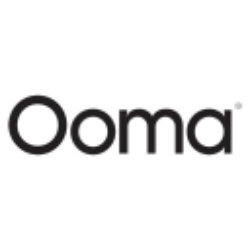
FMP

Ooma, Inc.
OOMA
NYSE
Ooma, Inc. provides communications services and related technologies for businesses and consumers in the United States and Canada. The company's products and services include Ooma Office, a cloud-based multi-user communications system for small and medium-sized businesses; Ooma Office Pro that offers services, including HD video meetings, call recording, enhanced call blocking, and voicemail transcription; Ooma Connect, which delivers fixed wireless internet connectivity; Ooma Managed Wi-Fi, a plug-and-play enterprise-grade Wi-Fi solution; and Ooma Enterprise, a unified-communications-as-a-service solution. It also provides Ooma AirDial, a plain old telephone service; Ooma Telo basic that provides unlimited personal calling within the Unites States; Ooma Premier, a suite of advanced calling features on a monthly or annual subscription basis; PureVoice HD, a residential phone services; Ooma Telo, a home communications solution designed to serve as the primary phone line in the home; and Ooma Telo 4G, which combines the Ooma Telo base station with the Ooma 4G Cellular Adapter and battery back-up. In addition, the company offers Ooma Mobile HD app that allows users to make and receive phone calls and access Ooma features and settings; Ooma Telo Air, a wireless Ooma Telo with built-in Wi-Fi and Bluetooth; Ooma Smart Security, a security and monitoring platform; and Talkatone mobile app. It offers its products through direct sales, distributors, retailers, and resellers, as well as online. Ooma, Inc. was incorporated in 2003 and is headquartered in Sunnyvale, California.
10.42 USD
0.13 (1.25%)
